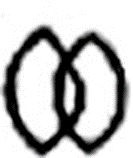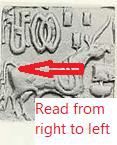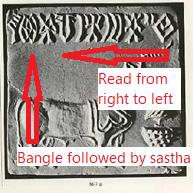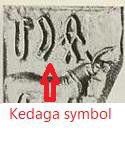Ayyappan and Ayyanar difference explained.
Difference between Ayyappan and Ayyanar
Abstract:
The name Ayyappan and Ayyanar are confusing. Both of them are the same gods or different? Ayyanar is a village security god, whereas Ayyappan is derived from God ‘Heh’, capable of giving ‘million years of afterlife’. My conclusion is that both are different gods.
——————————————————————————–
Many articles are available on the internet about Ayyappan and Ayyanar. And some articles give the impression that both gods are the same. I am citing below the editorial board note prepared by the Wikipedia editorial team regarding this difference of opinion. One editor says that Ayyanar and Ayyappan are different gods. I am also of the same view; both are different gods.
The below-given note is the editorial note prepared by the Wikipedia team
(reproduced as such for ready reference)
(Which shows the confusing nature of Ayyappan and Ayyanar)
The article says that Ayyappan and Ayyanar are the same and that the Tamils call Ayyappan as Ayyanar. To the best of my knowledge, this is incorrect. I’m a Tamil. Ayyappan is identified as the son of Shiva and Vishnu and is a wholly different god, while Ayyanar is a rural god of protection. Each village has its version of Ayyanar alias Muneeswarar alias Karuppsamy etc. These gods of security are manifestations of Shiva. This security role is apparent from the weapons that these gods have. Most have Trishul, along with massive swords or long sickles. Moreover, some of these gods are shown with a third eye (iconic of Shiva) and have three horizontal lines of holy hash decorating their foreheads (another symbol of Shiva). (1)
Figure 1: God of justice guarded by two guards.
Picture courtesy – (2)
The above-given picture shows two bodyguards flanking the judgment of God. Who is the god of justice? It is ‘Dharma’, none other than the God of death ‘Yama‘. The God sitting in the centre could be Yama. Those gatekeepers (body Guards) have been given equal importance to the God of judgment. All three gods are sitting on equal footing in an egalitarian way. Note that the God of judgment carries only a ‘Danda‘ (Small stick) to show ruling authority. He does not hold weapons, whereas the bodyguards (gatekeepers) bear arms.
Figure 2: Two guards in an open space outside the village.
Picture courtesy – (3)
The above-given picture gives a good idea of Ayyanar. These gods are in the open area, under a tree, and there is no temple with a roof for them. Located outside the village, they are gatekeepers to the underworld and the village community. Such gods are positioned outside the village’s periphery to protect the community from any evil influence (3).
Figure 3: God Ayyanar riding a horse.
Picture courtesy – (2)
The above-given image of Ayyanar shows another aspect of Ayyanar, which is exciting. Ayyanar is always depicted as God riding a horse, and his two gatekeepers have been reduced to demons carrying the horse’s front legs. These statues are present only in Tamil Nadu, not in any other state of India. However, the contradiction is that the horse is not a native animal of India. Horses were imported to Tamil Nadu only during the peak of Roman trade with South India. Then, wherefrom this horse-riding god arrive? The introduction of the horse shows that this God has come into existence only after the introduction of later Vedic gods.
The idea of judgment of God combined with the notion of riding a white horse carrying a sword brings to my mind the suggestion of ‘Armageddon‘. Surprisingly, the concept of God of judgment riding a white horse was an old idea of Indians. The idea of Armageddon may not be an idea from Indus civilisation, but the idea must be from the ‘Puranic period’. The ‘Kalki Avatar’ idea comes only in the ‘Puranic period’.
Figure 4: Indus seal showing God Ayyanar, gatekeeper and messenger gods. Seal picture courtesy –Sue Sullivan (4)
The above-given seal shows that God is carrying the sword along with Trishul. This Trishul indicates a ‘branch’ that stands for the word ‘Sastha'(God). This seal seems to be the product of the later period of Indus civilisation because one God is shown as bearing a sword appears in this seal. In earlier seals, only God bearing a stick is the standard formula.
(Read from right to left). The first God is carrying a sword. He could be Ayyanar or Rudra (Muneeswaran); the identification is based on the weapon he has, the blade. This second God could be the gatekeeper god because he holds a stick. The third pictogram shows the sacrificed bull’s leg (thigh piece). Which means the thigh portion of the bull was offered to gods. The fourth symbol is the messenger god, carrying the sacrifice offered to gods in his Kavari (Kavadi in Tamil). This inscription in this seal shows three different gods.
Figure 5: Picture of the new copper plate from Pakistan. Image courtesy — (5)
God Ayyappan could be the ‘guru.’ (Dharma Sastha)
God Ayyappan is considered a ‘Guru‘(teacher). He is also called Dharma Sastha, whereas Brahma Sastha is Skanda. The above-given seal is one of the five new copper plates found recently in Pakistan. (5) See the god figure shown in the illustration above. God has a ‘Mani’ (gem) on his neck. That is the particular identification mark for God Ayyappan (Kerala). Because of this identification mark, he is still called Manikanda (God with a gem on his neck). (6) Most probably, the word gem indicates the Dog Star (Sirius) (Canis Major). For more details, refer to pages 29 and 30 of my book, New Interpretations on IVC. (7)
Further, the seal inscription mentions him as a god associated with the cone ceremony.The inscription reads as ‘ cone- Indrasana- sastha’. The god associated with the ‘cone ceremony’ is none other than ‘Ayyappa’. Read my article, ‘cone symbol means eternal life, for more information. (8)
Even though the above-cited Wikipedia article says that ‘Sastha’ means ‘teacher’, Sanskrit dictionaries do not attest to this idea. The word is likely derived from ‘zakhastha’, which means ‘branch living God’ (9). This name ‘Zakhstha’ could have transformed into the word ‘Sastha’ today.
Figure 6: God, Dakshina-Murthy.
Picture courtesy – (Wikipedia)
‘Proto-Shiva’ seal and Dakshinamurthi
This particular characteristic of ‘’guru” corresponds well with the God Dakshinamurthi (10). In his aspect as Gnana Dakshinamurthi, Shiva is shown with four arms. He is depicted seated under a banyan tree, facing the south. Shiva is seated upon a deer throne and surrounded by sages who receive his instruction. Sometimes the wild animals are depicted surrounding Shiva instead of scholars. (Wikipedia)
Figure 7: Sky map showing the Orion constellation. Picture courtesy – Wikipedia
Further, the southern side position of Dakshinamurthi is reaffirmed by the Orion constellation area in the sky’s southern hemisphere. This constellation is located south of the ecliptical pathway. This ecliptical path is the pathway of the Sun, Moon and all the planets. The basic visualisation of Hindu priests is that all the celestial gods (Planets) pass through a path (ecliptic pathway), which is the central axis of the Hindu temple. In this scheme, Orion is a minor god on the southern sidewall of the Garbha- graha.
Figure 8: seal showing Dakshinamurthy and Ayyappa (Puppis).
Figure 9: Constellation map showing Orion, Canis Major and Puppis.
The above-given picture shows the Indus Valley seal depicting Proto-Shiva and the sky map showing all the Indus God’s animal constellations. (10) The relevance of this discussion about Dakshinamurthi is that the ‘Proto-Shiva’ seal corresponds with this God Dakshinamurthi in all aspects. The other name of this God is ”Mrighshira” because animals surround him. Another name is ”Pasupathi”; again, ‘Pasu’ means ‘cow’ or ‘animals’. All these names are existing names of ‘Shiva’, which correspond well to the Indus seal ‘Proto Shiva.’ For more details on Dakshinamurthi and this ‘Proto-Shiva’, read the other article under the headings, ‘Tree gods of Indus Valley Civilization’. (10)
In the above-given seal, Ayyappan could be identified with the ‘Puppis constellation’ just above the ‘Canis Major’ constellation. The position of the ‘Puppis’ constellation looks like that, as if a man is riding a tiger. This idea of ‘man riding a tiger’ suggests that the small God shown in the Indus seal could be the latter-day ‘Ayyappa.’
Figure 10: Picture of Ayyappa riding a tiger. Picture courtesy – (11)
The tiger is associated with Lord Ayyappan of Sabarimala, who was born by the union of Lord Shiva with Mohini (incarnation of Lord Vishnu). According to legend, Ayyappan, as a baby, was found by a king and queen on the banks of a river and brought to their palace. When the queen had a child, she became jealous of Ayyappan and planned to get him killed. She pretended to be ill and sent Ayyappan to fetch the tiger’s milk to cure her illness. She expected him to be killed by the tigers and was surprised to see Ayyappan return to the palace riding on a tiger, with the other tigers following him (11). This mythological story gives the idea that the ancient tale is still being remembered and perpetuated in the minds of South Indians even today.
The identity of Ayyappa is that he was equated with the star Sirius (Canis Major) by the Ayyappa temple priest himself. (12) (13) There was a dispute in the Kerala high court questioning the validity of the ‘Makara Vilaku’ ceremony. In the court, the Ayyappa temple priest admitted that the rising of the celestial star Sirius is only being celebrated as the ‘Makara Jyothi’ ceremony. (13) (12)
Ancient Egyptian priests and calendar makers emphasised the heliacal rising of the Sirius star. The reason is that the calendar followed by Egyptians did not correlate well with the annual flooding of the Nile. To correct their calendars, the Egyptians developed the ‘Sothic cycle’. This ‘Calendar correction mechanism’ is the reason for undue importance given to the ‘Sirius’ star’s arising. Even now, that event is blindly followed in the name of Shiv-Rathri and Makara Jyothi ceremonies in India.
Figure 11: Harappan seal depiction showing hunter-tiger symbolism.
Figure 12: Sky map showing Orion and Sirius constellations.
Hunter on the tree and tiger below
This seal is a different version of the yogi seal described above. The change is that the yogi has become the hunter. Now the same constellations combined are depicted as a tree, man and tiger. Tiger is the common link here. The myth of the tiger and hunter on Shiv-Ratri day should be recollected here. The story of Shiv-Ratri is vital from the Hindu point of view. Many Hindus follow the rituals on this important religious day.
The story goes in the following way. A hunter goes on a hunting trip into a forest and is chased by a tiger. To escape from the animal hunter climbs a tree and waits for the animal to go away. But the tiger decides otherwise and stays put in the same place, below the tree. The hunter chooses to remain on the tree overnight with no other option. To keep himself awake, the hunter plucks leaves from the tree and throws them down on the tiger, wishing it would go away. The whole night passes in this way. And in the early morning, the hunter notices that the tiger has disappeared. But there was a Shiv-lingam in that place instead of the tiger. The hunter feels that God Shiva had come in the form of a tiger to show the importance of Shiv-lingam of that place and the importance of the tree; Vilvam tree (Aegle marmelos tree (or) wood apple tree).
As other myths describe, there are two events in the story, one heavenly event and another earthly event. The temporal event has already been described. The celestial event is the heliacal rising of the Canis Major, which indicates the beginning of the New Year. Devote Hindus spend the whole night fasting and praying to Shiva. In ancient Egypt, a priest was assigned to watch every night to spot the rising of Sothis-star. Even now, Hindus follow the same old custom and carry out the special duty assigned to the priest without understanding the meaning behind the ritual.
The conclusion is that the Puppis constellation is being worshipped as God Ayyappa. God Ayyappa is helping to calculate the calendar and the new year’s day. In contrast, Ayyanar is a security god who plays a different role from the role played by Ayyappa. Hence both gods are different, not the same.
Egyptian god ‘Heh’ is known as ‘Ayyappa’ in the present-day Hindu religion
‘Heh’ was the personification of infinity or eternity in the Ogdoad in Egyptian mythology. (14) His name originally meant "flood", referring to the watery chaos that the Egyptians believed existed before the world’s creation. (15) The Egyptians envisioned this chaos as infinite, unlike the finite created world, so Heh personified this aspect of the primordial waters. (16) (17)
Like the other concepts in the Ogdoad, his male form was often depicted as a frog or a frog-headed human, and his female form as a snake or snake-headed human. The frog head symbolised fertility, creation, and regeneration. (18) The other common representation depicts him crouching, holding a palm stem in each hand (or just one), (19) sometimes with a palm stem in his hair, as palm stems represented long life to the Egyptians, the years being represented by notches on it. (17)
An aspect of Heh, holding a pair of notched palm branches
The God ‘Heh’ was usually depicted anthropomorphically, as in the hieroglyphic character, as a male figure with a divine beard and lappet wig. Typically crouching with one knee raised, sometimes in a basket—the sign for "all" the God typically holds a notched palm branch (palm rib) in each hand. These were employed in the temples for ceremonial time-keeping. This explains using the palm branch as the hieroglyphic symbol for the "year". (20) Occasionally, an additional palm branch is worn on God’s head. (17)
The personified, somewhat abstract God of eternity
God’s image and iconographic elements reflected the wish for millions of years of life or rule. ‘Heh’ became associated with the King and his quest for longevity. The placement of Heh along with a Pharoah’s corpse means the god will be granting him those "millions of years" afterlife.[9] (17)
The palm branch symbolises victory, triumph, peace, and eternal life in the ancient Near East and the Mediterranean world. The palm (Phoenix) was sacred in Mesopotamian religions and ancient Egypt, representing immortality. In Christianity, the palm branch is associated with Jesus’ Triumphal Entry on Palm Sunday. All these above-said narrations show that the palm branch would have been a holy object for the Indus people with the meaning of ‘million years of afterlife’.
The God shown in the above-given seal is decorated with three feathers. The above-shown God is the gatekeeper god. The inscription on the seal read as ‘Yajna – terrible God (number three) -Karkida (crab symbol) – gatekeeper god (Two doors symbol). It is a satisfaction to see that the name of God is mentioned in the inscription. It is a rare occurrence where we can correlate God with the inscription. Earlier, I had given the name ‘Karuppa-swami’ because God’s name was unknown. Now, we can call him ‘Bes’ with his Egyptian name. It is likely, ‘Bes’ is worshipped as ‘Ayyanar’ today in Tamil Nadu.
Even though the feather in his headgear resembles the palm branch in the head of the god ‘Heh’. This God may not be ‘Heh’. Under the Indus valley civilisation, the god ‘Heh’ exhibits two characteristics. The first is his crouched sitting position with one knee raised, and the second is his upraised hand. The below-given seals show those characteristics.
The above-given two seals show the god ‘Heh’ with the two characters said above. Under the modern Indian Hindu religion, this God is called Ayyappan and is worshipped only in south India, and his famous temple is in Sabari-mala, Kerala. But Hindus are not aware of his Egyptian antecedents and worshipping him without realising his absolute powers. He is the God capable of granting a man a million years of ‘afterlife’.
Bibliography
1. wikipedia(editorial-note). editorial note-(Ayyappan). wikipedia. [Online] May 2016. https://en.wikipedia.org/wiki/Talk%3AAyyappan.
2. wallpaperhdbase(ayyanar). god-ayyanar-image. wallpaperhdbase.com. [Online] June 2016. http://wallpaperhdbase.com/god-ayyanar-images.html.
3. wikipedia(Aiyanar). Aiyanar. wikipedia. [Online] May 2016. https://en.wikipedia.org/wiki/Aiyanar.
4. Sullivan, Sue. Indus Script Dictionary. s.l. : Suzanne Redalia, 2011.
5. Shinde, V and Willis, R.J. http://www.ancient-asia-journal.com/article/view/aa.12317/97#how-to-cite. Ancient Asia journal.com. [Online] 8 October 2014. http://dx.doi.org/10.5334/aa.12317.
6. wikipedia(Ayyappan). Ayyappan. wikipedia. [Online] May 2016. https://en.wikipedia.org/wiki/Ayyappan.
7. jeyakumar(book). New_Interpretations_on_Indus_Valley_civilization. academia.edu. [Online] 2009. https://archive.org/details/NewInterpretationsOnIndusValleyCivilization/page/n15/mode/2up.
8. Jeyakumar(Cone-symbol). Cone symbol means Given eternal life. https://www.academia.edu. [Online] 2018. https://www.academia.edu/41094648/Cone_symbol_means_Given_eternal_life.
9. spokensanskrit.de. zakhastha. spokensanskrit.de. [Online] May 2016. http://spokensanskrit.de/.
10. Jeyakumar(tree-gods). Tree_gods_of_Indus_valley_civilization. academia.edu/. [Online] https://www.academia.edu/25651400/Tree_gods_of_Indus_valley_civilization.
11. C.P.P.Environmental education centre. Bengal Tiger. http://ecoheritage.cpreec.org/Viewcontall.php?$mFJyBfK$MkoNJ@juGN. [Online] http://ecoheritage.cpreec.org/Viewcontall.php?$mFJyBfK$MkoNJ@juGN.
12. wikipedia(makarajyothi). Makara_Jyothi. wikipedia.org. [Online] https://en.wikipedia.org/wiki/Makara_Jyothi.
13. Hindu(makarajyothi). Makarajyothi-is-a-star-senior-Thantri/article15538404.ece. www.thehindu.com. [Online] https://www.thehindu.com/news/cities/Kochi/Makarajyothi-is-a-star-senior-Thantri/article15538404.ece.
14. Wilkinson, Richard H. The complete gods and goddesses of ancient Egypt. London : Thames & Hudson. , 2003. ISBN 978-0-500-05120-7..
15. Genesis in Egypt, The Philosophy of Ancient Egyptian Creation Accounts. Yale Egyptological Seminar, 1988. Allen, James.P (1). Yale University : Yale Egyptological Seminar, 1988, 1988.
16. Allen, James P.(2). Middle Egyptian: An Introduction to the Language and Culture of Hieroglyphs. Cambridge : Allen, James P. Middle Egyptian: An Introduction to the Language and Culture of Hieroglyphs. Cambridge University Press, 2000, 2000.
17. Wikipedia(Heh_god). Heh_(god). Wikipedia.org. [Online] https://en.wikipedia.org/wiki/Heh_(god).
18. Rush, John. The Twelve Gates: A Spiritual Passage Through the Egyptian Books of the Dead. Berkely,CA : Frog, 2007.
19. Owusu, Heike. Egyptian Symbols. New York. : Sterling., 2008.
20. Remler, Pat. Egyptian Mythology, A to Z. New York. : Chelsea House., 2010.
















